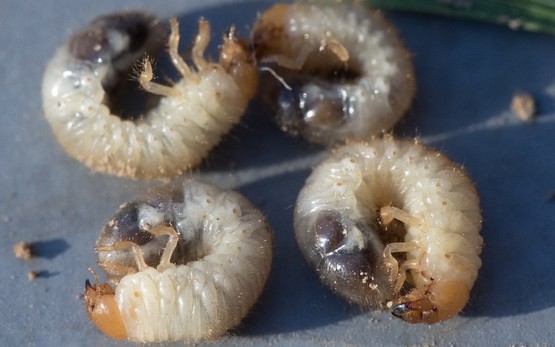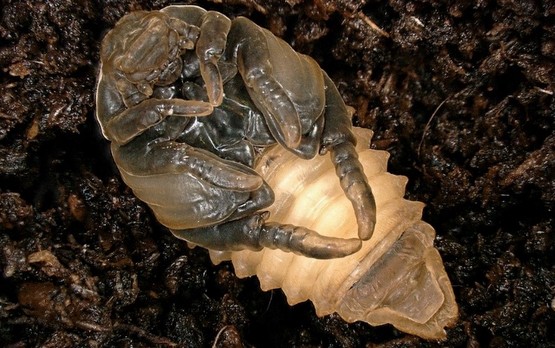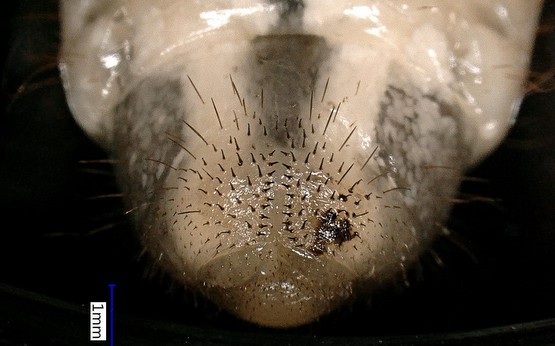Pilz als Insektizid - Die beste Waffe gegen Japankäfer Aus nano am 4.5.2021 (only german)

Appearance
White grubs, or chafer grubs, are the larvae of beetles belonging to the superfamily Scarabaeoidea. Their banana-shaped or C-shaped bodies are white, grey or yellowish. They have very weakly pigmented skins, especially at the rear end, allowing the intestinal contents to show through. Each of the three segments behind the head bears a pair of well-developed thoracic legs. The yellow to brown head capsule has two strong and sharp mouthparts.
Main indigenous species
Grubs live in the soil and feed on dead organic matter or the roots of living plants. The main species causing damage in Switzerland are the common cockchafer (Melolontha melolontha), the summer chafer or European June bug (Amphimallon solstitiale), the European chafer (Amphimallon majale) and the garden chafer or garden foliage beetle (Phyllopertha horticola).
Rose chafer grubs (Cetonia aurata) are sometimes found in gardens and occasionally even in balcony flower pots. These grubs are relatively large, but their mouthparts are not strong enough to damage the roots of healthy plants. Rose chafer grubs are therefore not a garden pest! They often occur in compost heaps, where they feed on decomposing organic material.
Life cycle
The common cockchafer and its relatives develop at different speeds depending on the species. Small species, such as the garden chafer and the European chafer, pass through the developmental stages from egg to third larval stage in just a few months. After overwintering, the larvae pupate in spring and hatch as adult beetles only a year after the eggs were laid.
The European June bug has a two-year cycle, while the common cockchafer usually takes three or even four years to develop. The grubs of these two species are especially voracious and cause the most damage in the second year of development.
Another interesting aspect of the common cockchafer’s development is its synchronisation. Most of the population in a given area develops simultaneously and at the same pace. These developmental cycles have remained virtually unchanged in recent decades. It is therefore easy to predict when the “flight year” of a given common cockchafer population will occur, or when it will cause the most damage.

Differentiating features
Chafer grubs can be differentiated to some extent on the basis of size. The largest grubs are those of the common cockchafer, measuring up to 2.5–3.5 cm in the third larval stage. The smallest are those of the garden chafer, at 1.5 cm or less. Their locomotion also gives clues to the species: grubs of the garden chafer and European June bug can stretch their bodies and use their thoracic legs to move on smooth surfaces. In contrast, grubs of the common cockchafer cannot stretch and always remain curved, so that on a smooth surface, they lie on their side and are unable to move in a purposeful way. However, the only certain way to differentiate chafer grubs is by looking at the bristles on the ventral side of the last body segment. These bristles are shaped and arranged differently depending on the species.






